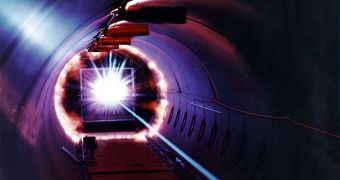Over the past few years, the growing threat of orbital debris has prompted the American space agency to develop a series of initiatives aimed at dealing with the problem. Experts with the National Research Council (NRC) have now formed a panel to analyze the proposals, and improve them if needed.
Earth's orbit is currently clogged with space junk, a generic term given to a host of objects that have been trapped in a stable orbit, and pose a threat to launching spacecraft and satellites.
They include, but are not limited to, small pieces of paint, rocket components, debris left behind by satellite collisions, shards of metal and other materials, and even rocket stages. Each of them can cause severe damage to incoming vehicles.
The most dangerous thing about these materials is not their actual size, but the fact that they are traveling at speeds of thousands of kilometers per hour. They can easily pass through the outer shell of the space shuttles, regular satellites, and the International Space Station (ISS).
In order to help NASA counteract this threat, the NRC has established a special committee that is in charge of reviewing all the steps the space agency is taking to address the problem, Space reports.
“It's a worldwide problem – everybody who does operations in space is creating debris,” said NASA official Gene Stansbery at a committee workshop discussing existing orbital debris programs, on Wednesday, March 9.
The expert, who is based at the NASA Johnson Space Center (JSC), in Houston, is the program manager of the Orbital Debris Program Office. The NRC review panel is led by former NASA scientist Donald Kessler.
He is the discoverer of the effect bearing his name, which proposes that the more the density of objects in space increases, the more likely they are to collide with each other, in turn generating more debris.
The Kessler effect basically suggests that – without the appropriate actions – the orbital corridors satellites and the ISS use today may be drenched in debris, produced by cascading events.
For example, two satellite collider and produce debris. After a while, those debris make their way into another orbit, where they are very likely to slam another satellite, producing even more junk.
This feedback loop eventually spreads like wildfire, preventing the correct operation of satellites, and essentially grounding other spacecraft to Earth. Even today, NASA calculates the probability of space junk impact for every shuttle mission it conducts.
These percentages have been increasing steadily for the past years, and the review panel wants to find the best way of ensuring that that doesn't happen anymore.
“The orbital debris that is on orbit right now – it is going to stay there. There is no capability right now to remove objects from orbit, or attempt to change them. We just have to be able to avoid them,” says John Lyver.
The expert is the manager of the NASA Meteoroid and Orbital Debris Program Offices, which are based at the NASA Headquarters, in Washington DC.

 14 DAY TRIAL //
14 DAY TRIAL //